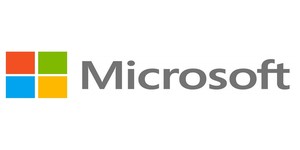
A new patent from those wily hackers over at Microsoft has revealed a neat idea to make touch-typing on a tablet screen that little bit more comfortable.
As detailed over on Gizmodo, the patent covers a rather novel way of addressing the issue that it's pretty much impossible - with no tactile feedback - to align your fingers to an on-screen keyboard without actually looking at what you're doing.
By using a multitouch-capable display, the patent details a system whereby the base of the hand resting on the screen is detected and used to align half of the keyboard in such a way that the fingers rest on the 'home' keys - a position familiar to any touch-typist worth his or her salt. The theory is that this gives you a static frame of reference no matter where on the device your hands are actually located - allowing for easy touch typing just like on a physical keyboard.
The patent also describes the use of the palm-detection capabilities to make actually firing up the on-screen keyboard easier, too: simply put your hands on the screen in the "I'm ready to type" position and up comes the keyboard.
The full patent also covers some neat scaling tricks, using the distance between the base of the hand and the tips of the fingers to adjust the size of the keyboard - meaning that users should never find themselves struggling to pick out individual keys or stretching too far to hit anything.
Let's just hope that the missing G key in the patent's illustrations is an oversight rather than flaw in the code behind the technology, or typing my name on a tablet is likely to get rather more difficult in the future.
Do you think that this could be the ultimate in on-screen keyboard technology for tablets, or does the concept still have a way to go before you'd be convinced? Share your thoughts over in the forums.
As detailed over on Gizmodo, the patent covers a rather novel way of addressing the issue that it's pretty much impossible - with no tactile feedback - to align your fingers to an on-screen keyboard without actually looking at what you're doing.
By using a multitouch-capable display, the patent details a system whereby the base of the hand resting on the screen is detected and used to align half of the keyboard in such a way that the fingers rest on the 'home' keys - a position familiar to any touch-typist worth his or her salt. The theory is that this gives you a static frame of reference no matter where on the device your hands are actually located - allowing for easy touch typing just like on a physical keyboard.
The patent also describes the use of the palm-detection capabilities to make actually firing up the on-screen keyboard easier, too: simply put your hands on the screen in the "I'm ready to type" position and up comes the keyboard.
The full patent also covers some neat scaling tricks, using the distance between the base of the hand and the tips of the fingers to adjust the size of the keyboard - meaning that users should never find themselves struggling to pick out individual keys or stretching too far to hit anything.
Let's just hope that the missing G key in the patent's illustrations is an oversight rather than flaw in the code behind the technology, or typing my name on a tablet is likely to get rather more difficult in the future.
Do you think that this could be the ultimate in on-screen keyboard technology for tablets, or does the concept still have a way to go before you'd be convinced? Share your thoughts over in the forums.

MSI MPG Velox 100R Chassis Review
October 14 2021 | 15:04








Want to comment? Please log in.